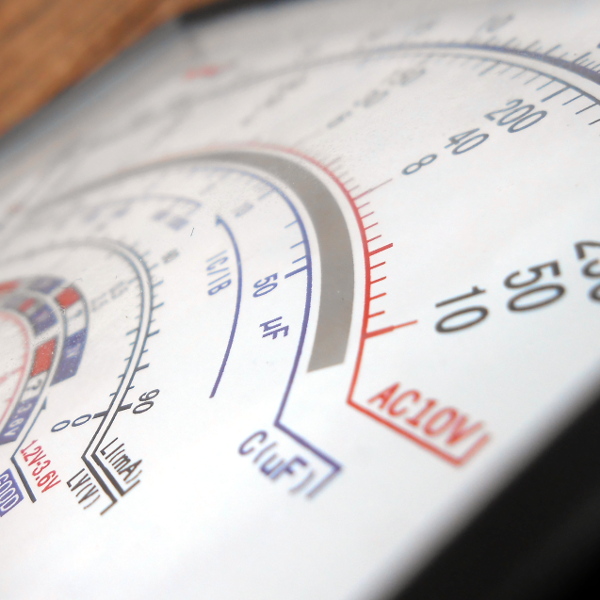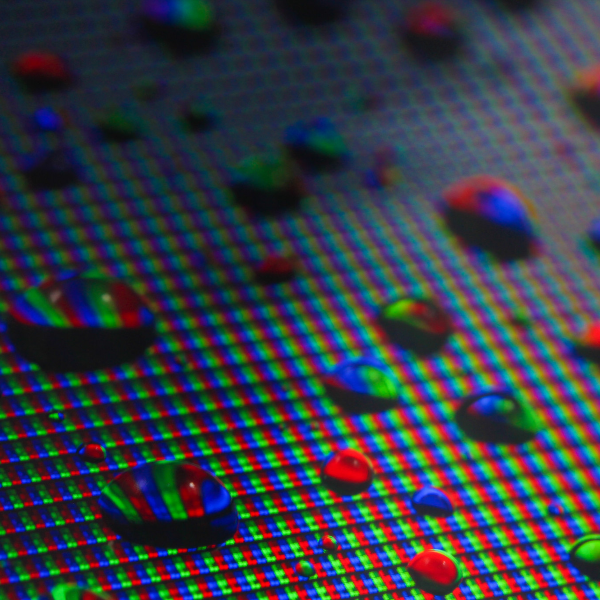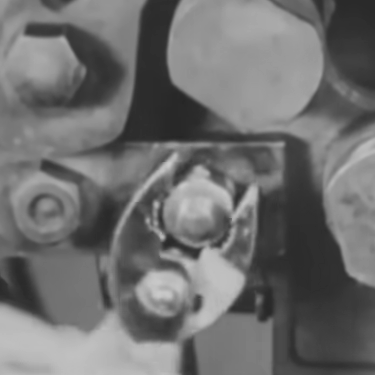[youtube=http://www.youtube.com/watch?v=lNAKL9qtnIA]
I’m going to break from the typical Hackaday article format for a moment. I’m smitten, captivated by this wondrous new discovery. Forgive my ignorance for having never seen one of these before, I didn’t go to school for electronics. For those, who like myself wondered, what is this beautiful glowing thing, it is a mercury arc valve rectifier.
This is not some chintzy attempt at neo victorian styling (steampunk if you absolutely must), this is an actual piece of electronics used in the field. Widely used to convert alternating current to direct current for railways and street cars, these could actually be found in the wild. There was a time, that opening a door in a power station would have presented you with this fantastic green and purple glowing orb, dripping mercury sparkling inside. If you are anything like me, you would most likely have been frozen in your tracks, convinced you were bearing witness magic.
[via Make]
















Gorgeous.
And thank you for taking a swipe at the steampunk kiddies. When they learn that “pretty but nonfunctional” doesn’t count, they’ll start being taken seriously.
Missing this Hackaday post first time around, and viewing it now due it was linked to in a current post on diodes. The steampunk fashion is something I I take are leave, mostly leave. However I wouldn’t take a broad brush to it, having seen it be the impetus to build function items that look fantastic, employing high craftsmanship.
Looks like something straight out of Bioshock….
Hands down, awesome, nothing else to say.
Hmm would it be plauseable to find one of these in an old substation, or maybe old power facility? Cause I think we have both in our town, time for some B&E!
I have one
It’s beautiful, but it’s also scary looking. I’d like to see one up close.
I had heard of those but never seen a picture. Jaw on the floor.
That is straight out of science fiction.
I have read up on these a couple years ago. Very amazing. I would not mind having one in my living room lol.
That is pretty awesome, as long as you don’t drop it…
Dave Packard of Hewlett Packard used to test these at GE. The original fail rate in the lab was so high that they had to leave the doors of the test room open so when the tubes exploded you could run out easier! Then after the room “aired out” everyone would go back to work. Packard is credited with actually teaching the GE workers how to properly construct these things so they wouldn’t blow so often.
I would like to see a picture of some of the water-cooled TUBE amps used in some of the old radio transmitter stations. They’re supposed to have distilled water running THROUGH them. Being distilled, it’s non-conducting. They do have a system that measures high dielectric resistances in the system that throws an alarm when the water starts to conduct, even a little.
Anyone got pics?
@rallen71366 – People are still building liquid cooled tube amps. Hams are doing it all the time. using tubes designed to be liquid cooled. Distilled water not needed.
Widely used for HVDC links, which are rapidly replacing HVAC for submarine interconnects >~1.5km in length.
Sadly, new semiconductor devices are replacing the enormous halls of valves currently required. However, they still exist in large numbers. In fact, the Japanese use them to make a DC link between asynchronous AC networks.
So, how I build one of these things… And do it safely?
Otherwise where can I buy one?
I know I could go for a modern rectifier and not have all the dangers of having a component with mercury plasma.
I saw one of these in operation when I toured a gold mine in South Africa last year. It was impressive, especially underground. It was built by GE or Westinghouse in the 20’s and still going strong to this day.
They have a working one in a closed London Underground station.
Definitely alien technology.
Hey doc! Where are you going now, back to the future?
Nope, already been there.
bee eee ay utiful, steampunkers should learn a lesson here, when it comes to electronics, function comes before form, unless you can get it to do both like in this case! real world functionality, ac to dc converter, AND it looks damn good in the process.
Mercury vapor… hmmm…. it seems to me that something like that would throw off a MAD amount of UV light, maybe the glass is blocking it, but god that would be one BAD tan.
Reminds me of a plasma chamber of a semiconductor etch machine.
Those big high voltage tubes scare me. Do they emit X-Rays?
We had bunch of these on our plant before it shut down to run the DC overhead cranes , they were in service till 2000 *eek*.
I remember that every time we shut-down for maintenance whenever I recommissioned them I’d hold my breath to see if they actually fired back up.
As far as I am aware they are still there. Four of em (slightly different design to the vid but identical operation).
Fun to watch a vid , not so fun firing em up in the flesh trust me.
I learned about these while researching a Metra substation near 18th and Indiana in Chicago. They certainly are fantastic in video – I would love to see one in person!
Funny, this semester in class our teacher showed us a pic of these and told us how they worked. Cool to see one actually working.
No, no, no, no, no. This sucker’s electrical. But I need a nuclear reaction to generate the 1.21 gigawatts of electricity I need…
So its a 1920s version of a wall wart, eh? Very impressive looking bit of kit, I wonder how many of us covet one but don’t have a use for it? 95%?
This is a nice fork on hackaday, keep showing us wonderous things…
There is one in the Belsize tube station in London. Not sure if its still there now but there is a picture of it working here =>
http://www.subbrit.org.uk/sb-sites/sites/b/belsize_park_deep_shelter/index.shtml
Better picture here => http://www.subbrit.org.uk/sb-sites/sites/b/belsize_park_deep_shelter/index14.shtml
Holy crap, it’s a warp core!
Addendum, check out this picture from Wikipedia.
http://en.wikipedia.org/wiki/File:Mercury_Arc_Valve,_Radisson_Converter_Station,_Gillam_MB.jpg
Two words…………….TARDIS technology.
Listen to the accents:)
Dammit, now I need a plexi coffee table with this inside!
Tube porn! That’s right this is the porn of vacuum tubes. SEXXXY!
Sure beats those LED flashers!
http://www.subbrit.org.uk/sb-sites/sites/b/belsize_park_deep_shelter/index.shtml
Posted at 11:13 am on May 5th, 2010 by Peter
Looks like some scenes from Myst.
I live just down the road from one of the last and largest HVDC Mecury Arc rectifiers in production use. It’s also worth noting that the Haywards substation is located almost right on top of a fault line. That’s a lot of mercury vaour in there.
On the following page, scroll down to “68 – New Zealand HVDC – the interisland link”
http://hvdcusersconference.com/wiki/
I was at a hamfest back in 2008 and a guy was selling one of these for $150 dollars. I came very, very close to buying it, but decided I did not fancy having a glass tube filled with ~50 pounds of mercury sitting in my living room, waiting for the inevitable accident.
They have one of these in MOTAT in Auckland, NZ that runs the tram line that opperates between the Auckland Zoo and MOTAT. Its still in opperation as far as I am aware. One came up for sale about a year ago but I missed out in purchasing it, from memory it fetched about $500.00 and was still in its original shipping case.
im too lazy to read all the comments but you can get alot smaller versions for alot cheaper(1 of my tube amps uses 1) they still emit a nice eerie glow
also, they arnt in wide use anymore, most of the 1s that were in use have since been replaced by solid state and other methods of producing dc, only a few dozen actually are used in the us iirc
The thing that’s spinning below it, is that just a cooling fan or does it have some other purpose? It doesn’t seem like it’s spinning that fast, could it have magnets on it to agitate the mercury or something?
Just a cooling fan. Those things get very, very, hot. Very, very, quick.
Welcome to the darkside.
I seem to remember that there are several of these that service the train lines in NYC. There is (or used to be, haven’t been there in years) one at the Carnegie Science Museum here in Pittsburgh (not wired up) last I checked.
There’s this certain charm to the forerunners of modern electronics. This device captures that charm perfectly. In fact, I’d argue that you’re seeing charm in the container and not electrons absorbing and emitting photons. I dare anyone to prove me wrong!
Yep, I love old tech, esp. tubes (I am a guitar amp tech after all!) Nothing beats the warm glow of a tube’s heaters, and that ever so soft blue glow that some put out when you crank them.
Reminds me of an Indiana Jones style movie I once saw bout 20 years ago. Dunno what it was called though
…is this Iron Man?
Nah, it’s Mercury from the Metal Men (DC Comics)
I’m pretty sure they emit UV–after all, it’s basically a fluorescent tube without the phosphor.
But man, it’s cool. I wouldn’t stay near it long, though.
Last time I went on the Electric Railway to Snaefell I never got to see this! I think I may have been more interested!
And to think I grew up a stones throw away from them! (Yes I’m Manx)
STOP FRIKEN THROWING STONES AT SUCH BEAUTIFUL TUBES
if it was a rca or a ge
if you touch a telefunken with your rocks i will kill you where you stand
http://en.wikipedia.org/wiki/Mercury_arc_valve#Others
A 150 kV mercury arc valve at Manitoba Hydro’s Radisson converter station, August 2003
STOP FRIKEN THROWING STONES AT SUCH BEAUTIFUL TUBES
if it was a rca or a ge whatever,
if you touch a telefunken with your rocks i will kill you where you stand
http://en.wikipedia.org/wiki/Mercury_arc_valve#Others
A 150 kV mercury arc valve at Manitoba Hydro’s Radisson converter station, August 2003
(i forgot to put in the whatever)
STOP FRIKEN THROWING STONES AT SUCH BEAUTIFUL TUBES
if it was a rca or a ge whatever,
if you touch a telefunken with your rocks i will kill you where you stand
http://en.wikipedia.org/wiki/Mercury_arc_valve#Others
A 150 kV mercury arc valve at Manitoba Hydro’s Radisson converter station, August 2003
(i forgot to put in the whatever)
Being of sound (right) mind, I was fascinated by this creature. I grew up on tubes, and being a HAM operator I prefer tubes for finals. Also prefer tubes for sound amplification, warmer (pun intended) sound!
After reading some of the comments, makes me want to go dig thru my RCA tube kit for some of those glowing types.
I loved the tuning valves – son et lumiere indeed.